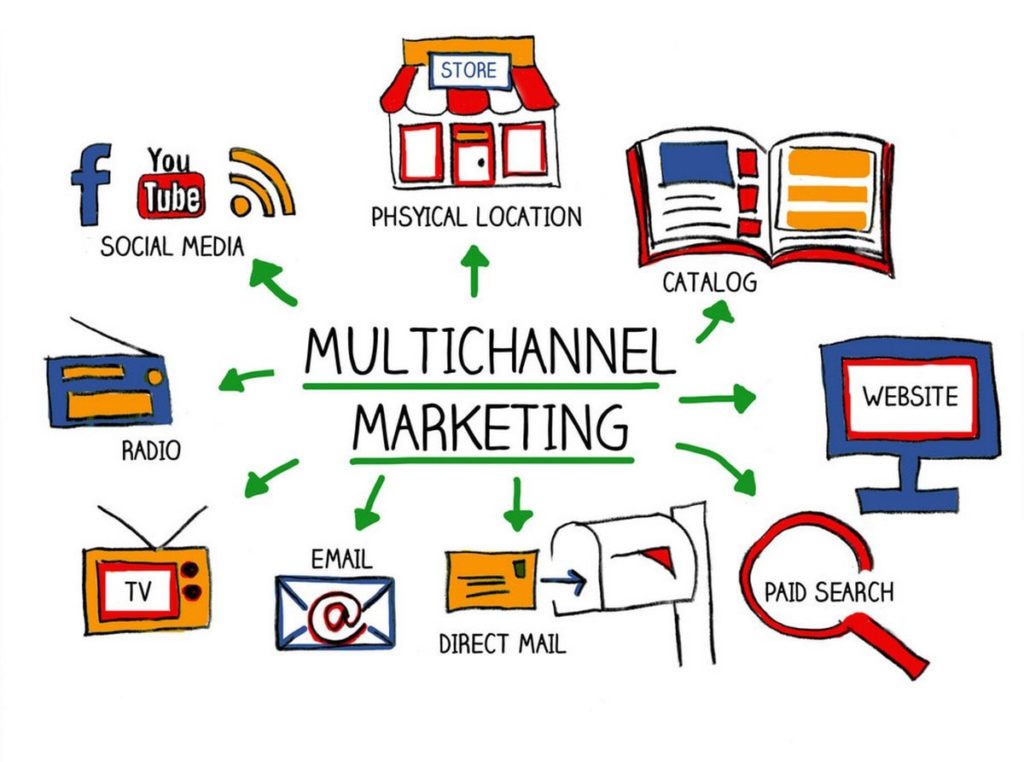
As any business publication will assure you, multichannel marketing is a new reality. In order to be successful, a business must market itself in more than one way; this can be done by using a mix of SEO, email, social, PPC, etc. However, how do you know which channels will be most effective in attracting and converting potential customers into clients? What should you be doing on each platform? Let’s break it down.
Multichannel Marketing Campaigns
Multichannel marketing can include print, TV, radio and more, but the general advice among marketing experts is that today’s small- to mid-sized businesses should be using the following touch points (if not more) to connect with current and potential clients online:
- Company Website
- Social Media (Facebook at a minimum, more if possible)
- Google Ads/Search
Note that just creating a presence on those channels is not the same thing as participating in a multichannel marketing campaign–that’s where the benefits of multiple consumer touch points can really be amplified.
By specifically tracking potential consumers and interacting with them across multiple platforms as part of a coordinated campaign, you can build deeper connections that will improve your lead and conversion rates.
According to a 2014 survey, 74% of businesses see a boost in sales with multichannel marketing.
One study by Gartner found that campaigns that use 4+ channels outperform campaigns that only use one or two channels by 300%.
So, what does a successful multichannel marketing campaign look like?
Successful Multichannel Marketing Methods
Let’s say you own an online clothing brand that sells t-shirts. You decide to run a sale to move old inventory and to attract new customers. The first place to do that is on your website, where you can capture customer data as they buy, but also use cookies and tracking software to retarget customers who visited your site but abandoned their cart part way through checkout.
A “cookie” is a piece of code that is sent from a website and stored on the user’s computer. It allows the site to track the user as they move around the web.
As those consumers move on to browse other websites that sell ad space, an ad for your store (or even the specific product they added to their basket) can follow them. You can add more people to the sales funnel with a Google ad sending people to your website, and then follow them around the web after they leave.
In addition to getting new clients from paid search, you can also promote your t-shirt sale to your email list. This drives traffic from your current client base to your website. Moreover, you can use the same retargeting strategy discussed earlier by exporting your email list and serving them targeted ads for the sale. This can boost the open rate on those emails from 50% to 100%, according to several professional testimonies. If those same clients see a similar ad/deal you run on Facebook, your conversion rates continue to climb.
If you promote that ad to a new audience, using boosted posts or targeted Facebook ad campaigns, more people see the website, and then get your retargeted ad. If they buy something or you offer another incentive to sign up, they can be added to your mailing list for the next time. Using multiple channels in your marketing efforts quickly compound to improve your growth.
Multichannel Marketing: Best Practices
To be really successful at multichannel marketing, you need more than just multiple channels. Here are a few things to consider as you set up your new strategy.
Data Is Key

Some pieces of the puzzle include:
- Google Analytics–A simple plug-in from Google that can provide a treasure trove of intel about both how your site is being used and who is using it. Discover how people find your site and see how your efforts change the data over time.
- Social media analytics–How many followers you have on each platform is nice to know, but who those fans are, what else they like, and how they respond to your content is even more helpful. When the numbers spike, you can assess what worked and why–and try to do it again.
- Gated content–Many small businesses will use free content, such as an ebook or free webinar, to build an email list. “Gating” that resource by requiring an email allows you to grow your list, but it can also help you understand which channels provide the best leads.
Nurture Your Client Relationships
Use Each Channel to Build Other Channels
Fans on Facebook might not be ready to buy, but they may be willing to sign up for your newsletter. In person, clients might be coaxed to like your webpage or to follow your Instagram feed for a free treat. Think about how each channel can help promote the others: the more touch points you have with each client, the better.
Use a Multi-Channel Marketing Strategy for Specific Campaigns
Building engagement is important, but it’s equally as important to coordinate your efforts across all your channels when you launch a new campaign. Make sure your ads and posts have clear calls to actions, (e.g. click here or call now), and that you encourage fans to like, share, sign up and generally engage with both your campaign and your site.
The more people see your brand, the more likely they are to remember it. In fact, “the Rule of 7” suggests that it takes seeing your brand seven times before a customer will really become aware of it at all. To get that many interactions, you must meet people where they are in different channels and create multiple opportunities for “exposure” to them through posting, search results, etc. Multichannel marketing allows you to maximize the impact of your campaigns, track potential customers through different formats, and keep reinforcing the same message.
